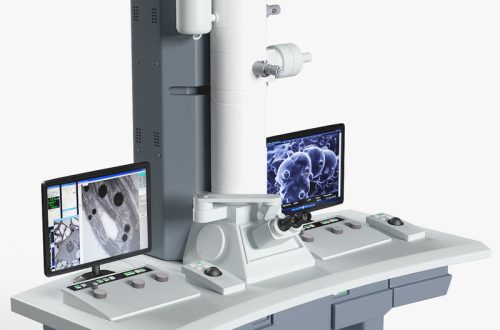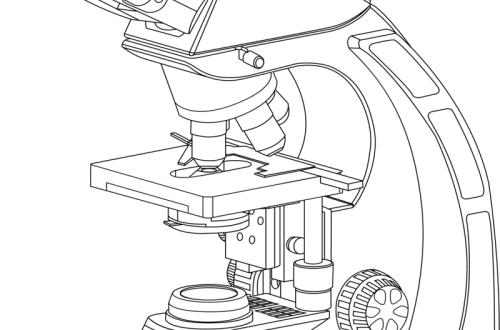Part 1: Choosing the Right Desk
When it comes to optimizing your office desk setup for productivity, choosing the right desk is crucial. Here are two key points to consider:
1. Size and Shape:
The size and shape of your desk can significantly influence your productivity and overall comfort. A desk that is too small can lead to clutter and disorganization, making it difficult to find the items you need. On the other hand, a desk that is too large can create a sense of emptiness or overwhelm, making it difficult to focus.
The ideal desk size will depend on your specific needs and workspace. Consider the amount of space you have available, the types of tasks you will be performing, and the number of items you need to keep on your desk. A larger desk may be necessary if you need to spread out or work on multiple projects simultaneously. However, if you have limited space, a smaller desk may be more practical.
The shape of your desk can also impact its functionality. A rectangular desk is a classic choice that offers a versatile workspace. However, a corner desk can be a space-saving option, especially in smaller rooms. Consider the layout of your workspace and the types of tasks you will be performing to determine the best shape for your desk.

2. Ergonomic Design:
Ergonomic design is another crucial factor to consider when choosing a desk. A desk that supports good posture and reduces strain on your body can help to improve your overall comfort and productivity.
Look for a desk with adjustable height options, allowing you to customize the workspace to fit your body. Adjustable height desks can help prevent back pain and fatigue by allowing you to maintain a comfortable and ergonomic posture.
Built-in storage solutions can also enhance the functionality and organization of your desk. Look for desks with drawers, shelves, or compartments to keep your workspace tidy and clutter-free. This will help you stay focused and productive.
Finally, consider the accessibility of power outlets. Ensure that your desk has easy access to power outlets for your computer, monitor, and other electronic devices. This will help you avoid the frustration of tangled cords and limited workspace.
By carefully considering the size, shape, and ergonomic design of your desk, you can create a workspace that is both functional and comfortable.
Part 2: Setting Up Your Work Area
Once you have chosen the right desk for your office, the next step is to set up your work area for maximum productivity. Here are two key points to consider:
1. Organize Your Work Tools:
A well-organized workspace can significantly boost your productivity and efficiency. Keep your most frequently used tools, such as pens, paper, scissors, and a computer, within easy reach. This will help you avoid unnecessary distractions and save time when switching between tasks.
Consider using a desk organizer or a drawer system to keep your supplies neatly arranged. This will make it easier to find what you need when you need it and prevent clutter from building up.
Additionally, declutter your workspace regularly to maintain a clean and organized environment. Remove any unnecessary items that are taking up space and creating visual clutter. A clean and uncluttered desk can help you stay focused and motivated.
2. Minimize Distractions:
Distractions can significantly hinder your productivity. Set up your desk in a quiet area of your workspace to minimize noise and interruptions. If possible, choose a location away from high-traffic areas or noisy coworkers.
Consider using noise-canceling headphones or background music to create a focused environment. These tools can help to block out distractions and create a more conducive atmosphere for work.
It’s also important to manage digital distractions. Turn off notifications on your phone and computer, close unnecessary tabs or applications, and
avoid checking emails or social media frequently. By minimizing distractions, you can improve your concentration and get more done in less time.

Part 3: Ergonomics and Comfort
Creating a comfortable and ergonomically sound workspace is essential for maintaining productivity and good health. Here are two key points to consider:
1. Invest in a Quality Chair:
Your chair is one of the most critical pieces of furniture in your workspace. A good chair can significantly impact your comfort, productivity, and overall well-being. Choose a chair with adjustable height, lumbar support, and a comfortable cushion to reduce strain on your body during long hours of work.
Adjustable height is essential for maintaining good posture. Your feet should be flat on the floor, and your knees should be at a 90-degree angle. Lumbar support is crucial for providing support to your lower back and preventing pain. A comfortable cushion will ensure that you stay comfortable throughout the day.
Consider investing in a high-quality ergonomic chair that is designed to promote good posture and reduce discomfort. These chairs often have additional features such as armrests, adjustable backrest angles, and breathable materials.
2. Position Your Keyboard and Monitor Properly:
The positioning of your keyboard and monitor is essential for maintaining good posture and preventing strain on your neck and shoulders. Your monitor should be positioned at eye level, with the top of the screen approximately at eye height. This will help prevent neck strain and eye fatigue.
The keyboard should be positioned at a comfortable height, with your wrists straight and your forearms parallel to the floor. Consider using a keyboard tray to adjust the height of your keyboard and ensure that it is at the correct level.
Additionally, ensure that your monitor is positioned at a comfortable distance from your eyes. A general guideline is to place your monitor about an arm’s length away from your face. This will help to reduce eye strain and fatigue.
By investing in a quality chair and positioning your keyboard and monitor properly, you can create a more comfortable and productive workspace.
Part 4: Personalize Your Workspace
Adding personal touches to your workspace can help to boost your mood and productivity. Here are two key points to consider:
1. Add Plants or Artwork:
Introducing natural elements or personal touches to your workspace can significantly enhance your mood and productivity. Incorporating plants or artwork can create a more inviting and inspiring atmosphere.
Plants have been shown to reduce stress, improve air quality, and boost creativity. Consider adding a small potted plant to your desk or placing a larger plant nearby. Choose plants that are low-maintenance and thrive in indoor environments.
Artwork can also personalize your workspace and make it more enjoyable. Hang a piece of artwork that inspires you or brings you joy. You can also use photographs, posters, or motivational quotes to create a visually appealing and inspiring space.
2. Keep It Organized:
A cluttered workspace can lead to distractions and decreased productivity. Keeping your desk organized is essential for maintaining a focused and efficient work environment.
Use file organizers, desk trays, and cable management solutions to keep your supplies tidy and accessible. This will help you find what you need quickly and prevent clutter from building up.
Regularly declutter your workspace to remove unnecessary items and maintain a clean and organized environment. A cluttered desk can create visual distractions and make it difficult to focus. By taking the time to organize your workspace, you can create a more productive and enjoyable environment.

Part 5: Lighting and Environment
The lighting and environment of your workspace can have a significant impact on your productivity. Here are two key points to consider:
1. Natural light:
Position your desk near a window to take advantage of natural light, which has been shown to improve mood and productivity. If natural light is limited, consider investing in a high-quality desk lamp to provide adequate lighting.
2. Temperature and air quality:
The temperature and air quality of your workspace can also impact your productivity. Keep the temperature in your office at a comfortable level and consider using an air purifier to improve air quality.
Part 6: Creating a Productive Routine
Once your office desk setup is optimized, creating a productive routine is key to maintaining high levels of productivity. Here are two key points to consider:
1. Prioritize tasks:
Start each day by prioritizing your tasks and creating a to-do list. This will help you stay focused and organized throughout the day.
2. Take regular breaks:
It’s important to take regular breaks throughout the day to avoid burnout and maintain productivity. Consider using the Pomodoro technique, which involves working for 25 minutes and then taking a 5-minute break, to help maintain focus and productivity.
In conclusion, optimizing your office desk setup for productivity involves choosing the right desk, setting up your work area, creating an ergonomic and comfortable workspace, personalizing your environment, and creating a productive routine. By following these tips, you can create a workspace that supports your productivity and enhances your overall well-being.




